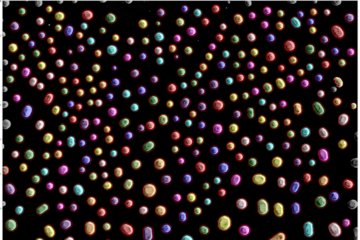All genres
501.
Talk
Asymmetric Line Segregation at Faceted Si Grain Boundaries. TMS 2019 Annual Meeting & Exhibition, San Antonio, TX, USA (2019)
502.
Talk
Energetics of non-stoichiometric stacking faults in Fe–Nb alloys: An ab initio study. TMS 2019 Annual Meeting, San Antonio, TX, USA (2019)
503.
Talk
Exploiting large ab initio data spaces to design materials. Openning of Christian Doppler Laboratory for nanoscale phase transformations, Linz, Austria (2019)
504.
Talk
Extending First-Principles Calculations to Model Electrochemical Reactions at the Solid-Liquid Interface. Towards Reality in Nanoscale Materials X, Levi, Finnland (2019)
505.
Talk
Exploration of large ab initio data spaces to design materials with superior mechanical properties. Physics and Theoretical Division Colloquium, Los Alamos, NM, USA (2019)
506.
Talk
A fully ab initio approach to electrochemistry and corrosion. CNLS Colloquium, Los Alamos National Laboratory, Los Alamos, NM, USA (2019)
507.
Talk
Modelling electrochemical solid/liquid interfaces by first principles calculations. 19th International Workshop on Computational Physics and Material Science: Total Energy and Force Methods, ICTP, Trieste, Italy (2019)
508.
Talk
Impact of chemical compositions and interstitial alloying on the stacking fault energy of CrMnFeCoNi-based HEAs from first principles. The 2nd International Conference on High-Entropy Materials , Jeju, South Korea (2018)
509.
Talk
High entropy alloys beyond configurational entropy. MRS 2018 Conference, Boston, MA, USA (2018)
510.
Talk
Exploration of large ab initio data spaces to design structural materials with superior mechanical properties. Multiscale Materials Modeling (MMM 2018) Conference, Osaka, Japan (2018)
511.
Talk
Ab intiio modelling of solid/liquid interfaces: Challenges and insights. DESY Seminar, Hamburg, Germany (2018)
512.
Talk
Employing ab initio thermodynamics to design structurally complex materials. RCTP-2018 Conference, Moscow, Russia (2018)
513.
Talk
Stacking fault energies of CrMnFeCoNi-based high entropy alloys from ab initio. Materials Science and Engineering 2018 (MSE) , Darmstadt, Germany (2018)
514.
Talk
Segregation and Transformation at Lattice Defects as Microstructure Design Toolbox. Materials Science and Engineering Congress, Darmstadt, Germany (2018)
515.
Talk
Fundamental compositional limitations in the thin film growth of metastable alloys. 3rd Conference on Advanced Functional Materials (AFM2018), Vildmarkshotellet Kolmården, Norrköping, Sweden (2018)
516.
Talk
Modelling thermodynamics and kinetics of general grain boundaries: Challenges and successes. Thermec 2018 Conference, Paris, France (2018)
517.
Talk
First-principles approaches for charged defects in low dimensional systems. Conference on Physics of Defects in Solids, Trieste, Italy (2018)
518.
Talk
Understanding fundamental doping and stoichiometry limits in semiconductors by ab initio modelling. EDS 2018 Conference, Thessaloniki, Greece (2018)
519.
Talk
Efficient approach to compute melting properties fully from ab initio with application to Cu. CALPHAD XLVII Conference, Querétaro, México (2018)
520.
Talk
Machine learning as tool to enhance ab initio based alloy design. Workshop: “Machine learning and data analytics in advanced metals processing", Manchester, UK (2018)









